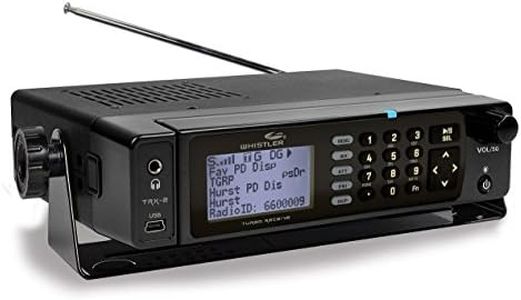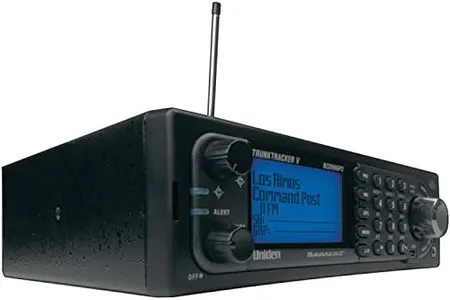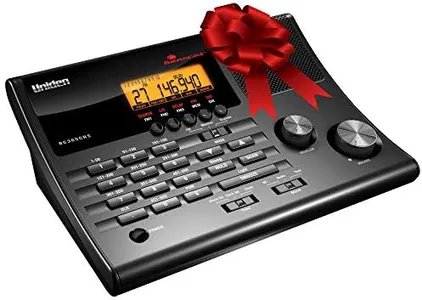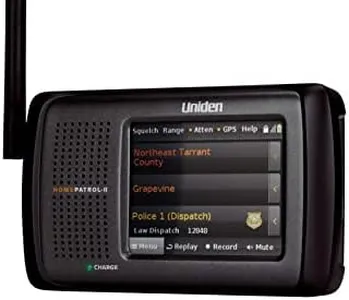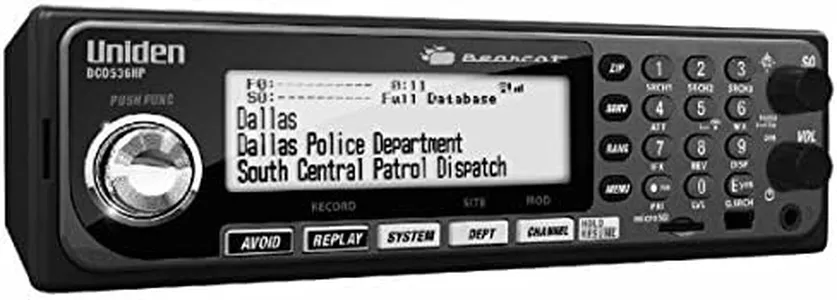10 Best Digital Police Scanners 2026 in the United States
Our technology thoroughly searches through the online shopping world, reviewing hundreds of sites. We then process and analyze this information, updating in real-time to bring you the latest top-rated products. This way, you always get the best and most current options available.

Our Top Picks
Winner
Whistler TRX-1 Handheld Digital Police Scanner Radio – Portable Scanner with EZ Scan, APCO P25 Phase I & II, DMR, NXDN, and USA/Canada Database – Black
Most important from
2014 reviews
The Whistler TRX-1 is a handheld digital police scanner designed for users interested in monitoring a wide range of radio systems, including digital formats like APCO P25 Phase I & II, DMR, and NXDN, as well as analog frequencies. With a frequency range from 25 MHz to 1.3 GHz, it covers many public safety, aviation, and weather channels. It supports trunking systems like Motorola, EDACS, and LTR, allowing users to track talkgroups and individual calls effectively. The scanner offers 22 channels, which is somewhat modest compared to some competitors but still sufficient for casual or intermediate scanning needs. One of its strengths lies in flexible scanlist management, letting users organize and customize up to 200 lists, including Skywarn weather spotter alerts, which is great for enthusiasts focused on emergency and weather monitoring.
Portability is a strong point here: the device is compact and light (just 7.4 ounces), designed for easy one-handed use with a simple keypad and interface. It runs on 4 AA batteries, which are easy to replace but might not offer the longest runtime compared to rechargeable options. The display is basic but clear enough for practical use, although it lacks water resistance, so users should be cautious in wet environments. Programming the scanner is made easier with PC software and USB connectivity, enabling users to save settings and update firmware.
Additional features such as audio recording on a MicroSD card, smart visual and audible alerts, and the ability to output raw data for third-party decoding add versatility for more advanced users. Despite the relatively low channel count and absence of water resistance, this scanner is well suited for hobbyists or those who want a reliable, portable device for monitoring police, fire, EMS, and weather transmissions without dealing with complex programming or bulky hardware.
Most important from
2014 reviews
Uniden BCD436HP HomePatrol Series Digital Handheld Scanner. TrunkTracker V, Simple Programming, S.A.M.E. Emergency/Weather Alert, Covers USA and Canada
Most important from
4334 reviews
The Uniden BCD436HP HomePatrol digital handheld scanner is a solid choice for anyone interested in monitoring police, fire, EMS, and other public safety communications across the USA and Canada. It covers a wide frequency range and supports both digital and analog signals, including advanced trunking systems, which makes it very versatile for picking up various types of transmissions. One of its standout features is the simple programming: just enter your zip code, and it automatically configures itself to local systems, so you don’t need technical know-how to get started. The scanner has a large, easy-to-read display that shows detailed information, which helps make navigation and listening more user-friendly. It also includes useful extras like GPS connectivity, instant replay of recent transmissions, and customizable alerts with different tones and colors, which can keep you informed about important events as they happen.
Weighing just about 1 pound and designed as a handheld device, it’s portable enough to carry around comfortably. On the downside, the scanner runs on three AAA batteries, which may require frequent replacements depending on use, and some users might find the initial learning curve for advanced features a bit steep despite the straightforward setup. Additionally, while the automatic programming is convenient, it might not satisfy users who want full manual control over all settings. For those looking for an easy-to-use, portable scanner with broad coverage and smart features, the Uniden BCD436HP is a strong pick, especially if you want something ready to go with minimal fuss.
Most important from
4334 reviews
Whistler TRX-2 Digital Police Scanner – Desktop/Mobile Scanner with EZ Scan Software, APCO P25 Phase I & II, DMR, NXDN, and USA/Canada Database Preloaded
Most important from
267 reviews
The Whistler TRX-2 is a solid desktop digital police scanner designed for enthusiasts who want thorough coverage and advanced features. It supports a wide variety of digital trunked systems like Motorola, EDACS, LTR, and P25, which means it can pick up many police and emergency channels across the US and Canada. Its ability to handle both group and individual calls makes it flexible for detailed monitoring. The scanner includes a large, built-in channel database on a MicroSD card, removing the need for constant PC programming, and it’s easy to update via USB.
Programming is simplified through its object-oriented database and user-friendly keypad, though some beginners might find the number of features a bit overwhelming initially. It can store millions of channels limited only by card size, which is great for serious users. The custom alerts with audible alarms and tri-color LEDs are excellent for quickly spotting important transmissions or simulating emergency vehicle strobes.
Portability is decent for a desktop unit; at just over 2 pounds and compact dimensions, it’s not too bulky but not handheld either. The rugged design and high-output speaker ensure clear audio even in noisy environments. Extra features like audio recording with time stamps and a wake-up timer add convenience for dedicated monitoring sessions. While it lacks analog-only options, focusing on digital and trunking systems, and requires Windows 7 or higher for software support, the price and complexity make it ideal for serious users seeking powerful functions in a durable package.
Most important from
267 reviews
Buying Guide for the Best Digital Police Scanners
When choosing a digital police scanner, it's important to understand the key features and specifications that will best suit your needs. A digital police scanner allows you to listen to various emergency services, including police, fire, and EMS, as well as other communications like weather alerts and public safety broadcasts. To make an informed decision, consider the following key specifications and how they align with your intended use.FAQ
Most Popular Categories Right Now


